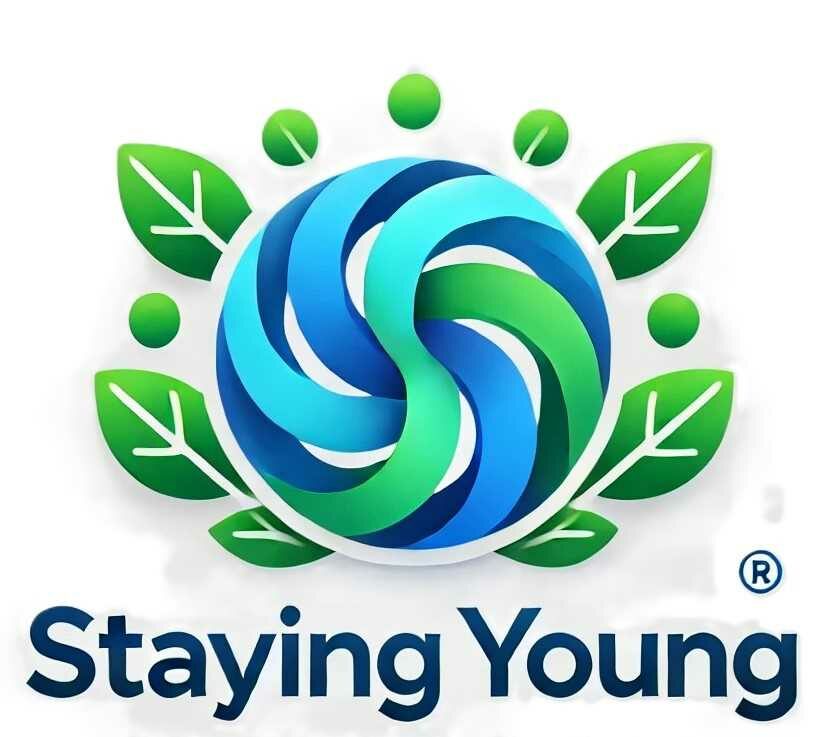Unlocking the Fountain of Youth: Exercise’s Role in Age Defiance
I’m here to help you with a pretty intriguing concept: exercising your way to staying young. And I’m not just talking about looking good in your jeans or having the energy to keep up with your kids, but actually dipping into nature’s own Fountain of Youth.
You’re going to find out about the connection between staying active and warding off the effects of time on your body. We’ll cover how regular movement can have profound effects on your biological age, which is how old your body really feels and functions, versus the number of candles on your birthday cake.
I’m going to share with you what recent studies have uncovered about exercise and its astonishing effects on cellular health. In my opinion, the relationship between exercise and staying biologically young is just as important as the aesthetic benefits.
If you want to understand how breaking a sweat on a regular basis can lead to a younger you, both inside and out, you’re in the right place. This isn’t just about being able to run faster or lift more; it’s about deepening the mind-body connection and reaping the rewards over the course of your life.
Don’t worry too much about having to commit to intense workouts right away. You can always adjust your approach down the road. Choose something that resonates with you—whether it’s dance, swimming, or just brisk walking—the goal is to get moving and keep moving.
A lot is happening very quickly in the field of exercise science, and understanding the cellular and molecular changes involved in how exercise keeps your body young is a fascinating story. That’s the strategy I like to leverage—staying updated with the latest research to bring you the most beneficial health advice.
So, my question to you today is, are you ready to turn the clock back with exercise? Let’s explore how physical activity can be your ally against aging.
 Science of Sweat: Decoding How Exercise Slows Aging
Science of Sweat: Decoding How Exercise Slows Aging
I’m going to take you through a fascinating tour inside your body, where we’ll unravel the impact of exercise on the aging process. It’s not science fiction; it’s science fact. Regular physical activity sparks a series of molecular ballets that not only delay the signs of aging but may also reverse some. We’re talking about a cellular-level Benjamin Button effect here.
Now, exercise isn’t just about burning calories or building muscle; it’s a trigger for complex physiological processes. Staying active boosts antioxidants, repairs DNA damage, and enhances mitochondrial function, which is pretty crucial because mitochondria are the powerhouses of your cells. When they age, you age – but keep them young, and you’re on your way to maintaining a youthful vigor.
Regular sweat sessions also cue your body to release proteins like irisin, which play a huge role in the anti-aging drama. Known as ‘exercise hormones,’ these proteins help in converting white fat into brown fat, which is a good thing because brown fat burns calories. It’s like your body’s internal weight management consultant, helping you stay lean and mean, regardless of the candles on your birthday cake.
What’s astounding is that the anti-aging effects of exercise extend beyond the muscles and the mirror. They seep into your very DNA. Telomeres, which are the protective caps at the ends of chromosomes, tend to shorten as you age, but guess what? Regular exercise preserves their length, keeping your cells’ biological clock ticking correctly. This isn’t just about looking good, it’s about cellular integrity.
You might be wondering how much exercise you need to tap into these perks. Well, the American Heart Association recommends 150 minutes of moderate or 75 minutes of vigorous activity per week as a good starting point. But this isn’t a one-size-fits-all situation. The key is consistency and finding a rhythm that keeps you engaged and excited about moving your body.
In light of the profound anti-aging benefits, integrating exercise into your daily routine is an investment in your years to live in good health. As we transition into the next section, you’re going to find out about how strength training, in particular, plays a crucial role in maintaining muscle mass and metabolism, which is vital for aging gracefully.
A Muscle-Deep Look at Exercise’s Anti-Aging Properties
You’ve heard that exercise is good for your muscles, but it’s not just about looking toned. The right kind of workout goes beyond skin-deep aesthetics and ventures deep into your cells where the anti-aging magic happens.
Strength training, for instance, does wonders in maintaining muscle mass and metabolism. As we age, we lose muscle mass a process known as sarcopenia. Resisting this natural decline keeps your metabolic rate up, which means you can burn more calories even at rest.
But there’s more. Resistance training also plays a crucial role in bone density. Those weight-bearing exercises you do signal your body to strengthen your bones, important for preventing osteoporosis, a condition that makes bones fragile and more prone to fractures.
Experts in aging and fitness unanimously advocate for a regular strength training regimen. This kind of exercise isn’t just for the young or athletes; it’s critical for everyone, especially as you get older. 
If you’re thinking that lifting weights could be monotonous, think again. There are plenty of creative and enjoyable ways to engage in resistance training and it’s never too late to start. So, pick up those dumbbells or start with body weight exercises. Your future self will thank you.
The Hormonal Harmony: Balancing Body Chemistry with Activity
You’re going to find out about how regular movement isn’t just a calorie burner; it’s a master regulator for your body’s chemistry. Engaging in physical activity goes beyond just muscles and heart rates – it balances your endocrine system and helps maintain hormonal harmony, which is crucial as we age.
The relationships between hormones and exercise are bidirectional. Not only do your hormone levels influence your ability to exercise but staying active can profoundly reshape your hormonal landscape. For instance, cortisol, known as the stress hormone, is better regulated in individuals who maintain consistent exercise routines, leading to increased resilience to stress.
But cortisol isn’t the only hormone in the arena. Exercise triggers the release of a cocktail of feel-good hormones, including endorphins and serotonin. These natural mood lifters play a significant role in keeping us happy and, by extension, young at heart. Regular exercise has been linked to better mood, reduced anxiety, and even a lower risk of depression.
And there’s more. Growth hormone, which plays a pivotal role in tissue repair and muscle growth, is released in higher quantities during and after exercise, particularly after strength training sessions. This process is essential for maintaining lean muscle mass, which tends to diminish with age.
In my opinion, the cognitive benefits are among the most exciting. Regular physical activity has a protective effect on the brain, often associated with a decreased risk of cognitive decline and neurodegenerative diseases. By boosting blood flow to the brain, exercise fosters the growth of new brain cells and connections, essentially keeping both your body and mind young.
So, what next? It’s about making this knowledge actionable. Don’t just nod along – integrate these hormone-balancing exercises into your lifestyle. In the next section, ‘Lifestyle Shifts: Integrating Exercise for a Youthful Tomorrow,’ I’m going to be talking about turning evidence into action, and how to lace up those sneakers for more than just an occasional jog.
Lifestyle Shifts: Integrating Exercise for a Youthful Tomorrow
You’ve seen the facts and heard the success stories – exercise isn’t just a fountain of youth; it’s a pillar of vibrant living. Now, I’m going to help you bridge the gap between understanding its importance and taking action.
Incorporating exercise into your life doesn’t have to be daunting. Start small and choose activities that resonate with you. Love nature? Go for a hike. Enjoy music? Try a dance class. It’s about moving your body and having fun while you’re at it.
Remember, your first attempt doesn’t need to be your last. You can always adjust your approach down the road based on your preferences and goals. The key is consistency; even a little exercise is better than none.
I really hope that you feel inspired to make these lifestyle modifications, not only for your physical health but for your overall well-being. Embrace the changes slowly and celebrate every small victory; over time, you’ll not only look but feel significantly younger.
Visualize the future you want and let’s make it happen. Adopting a physically active lifestyle is your ticket to not just adding years to your life, but life to your years. Keep pushing, stay motivated, and most importantly, enjoy every step of the journey to a younger you.
